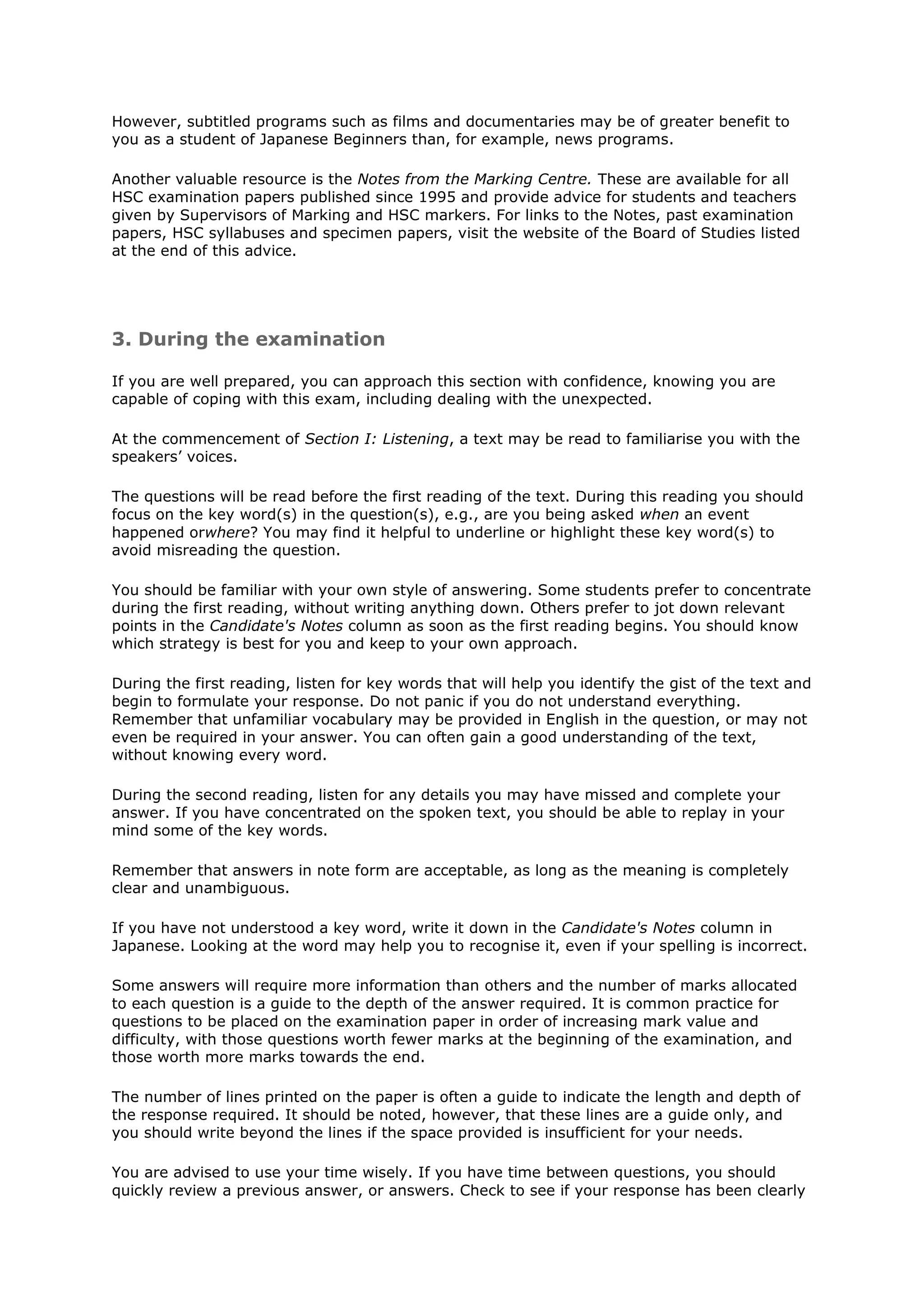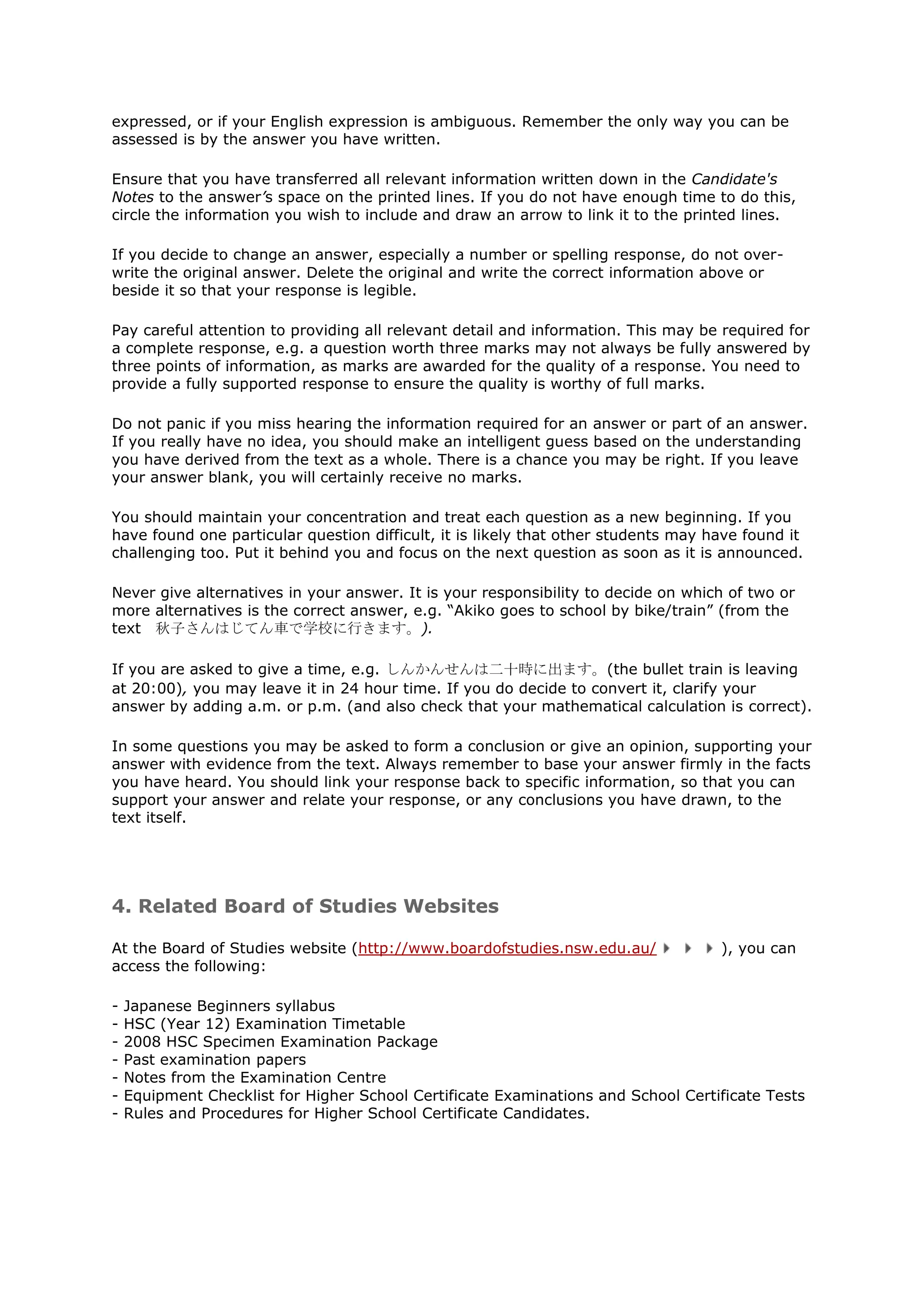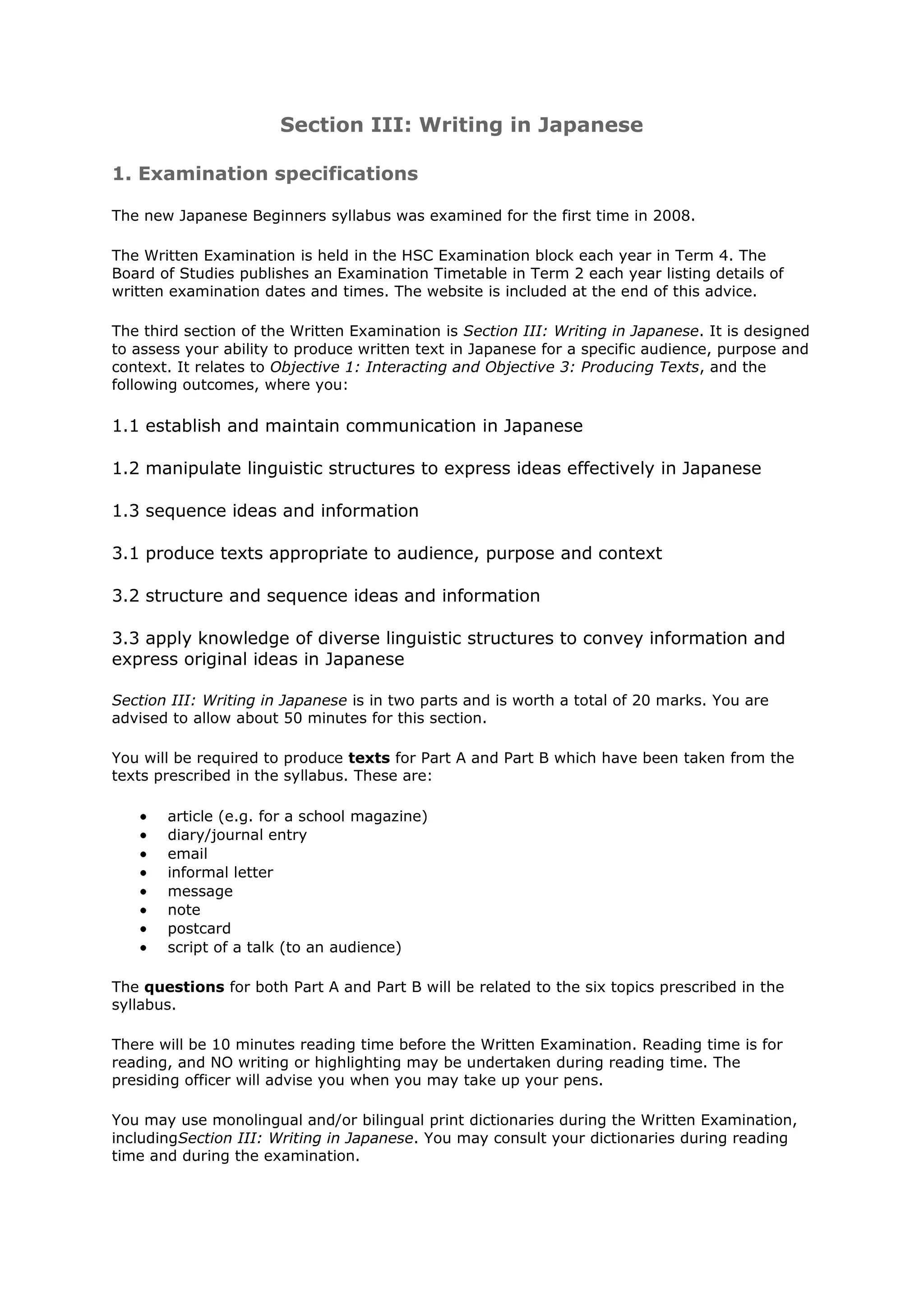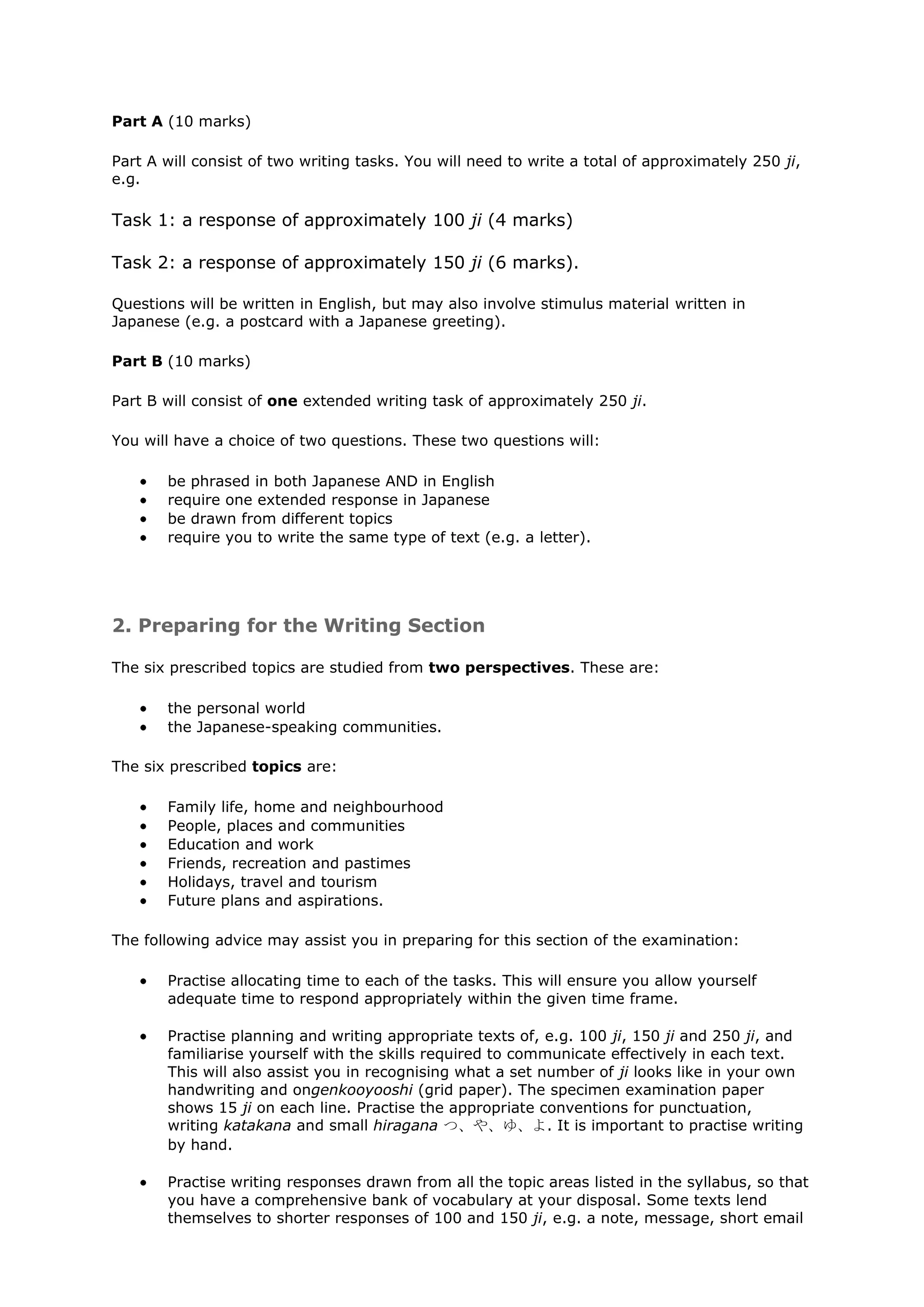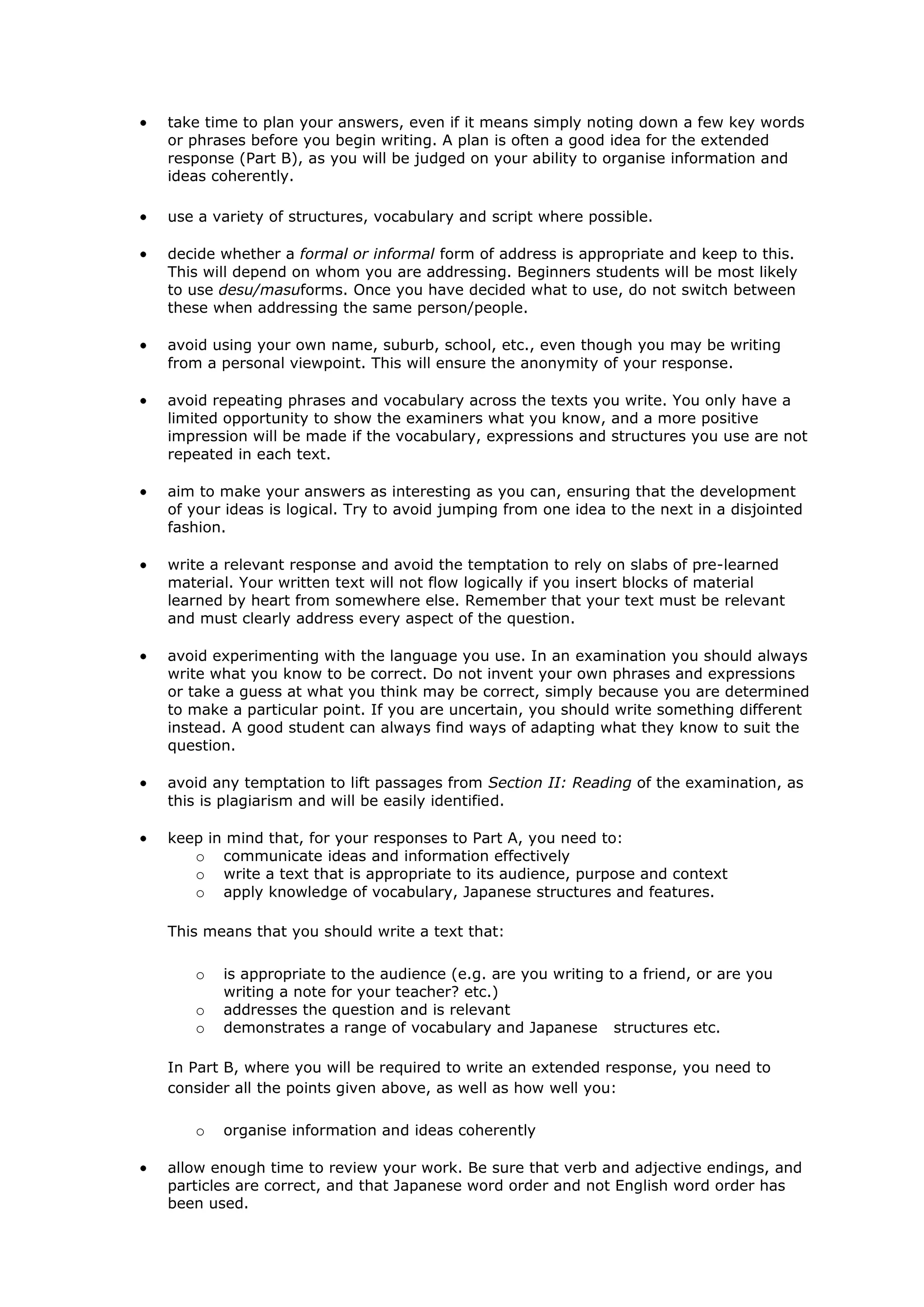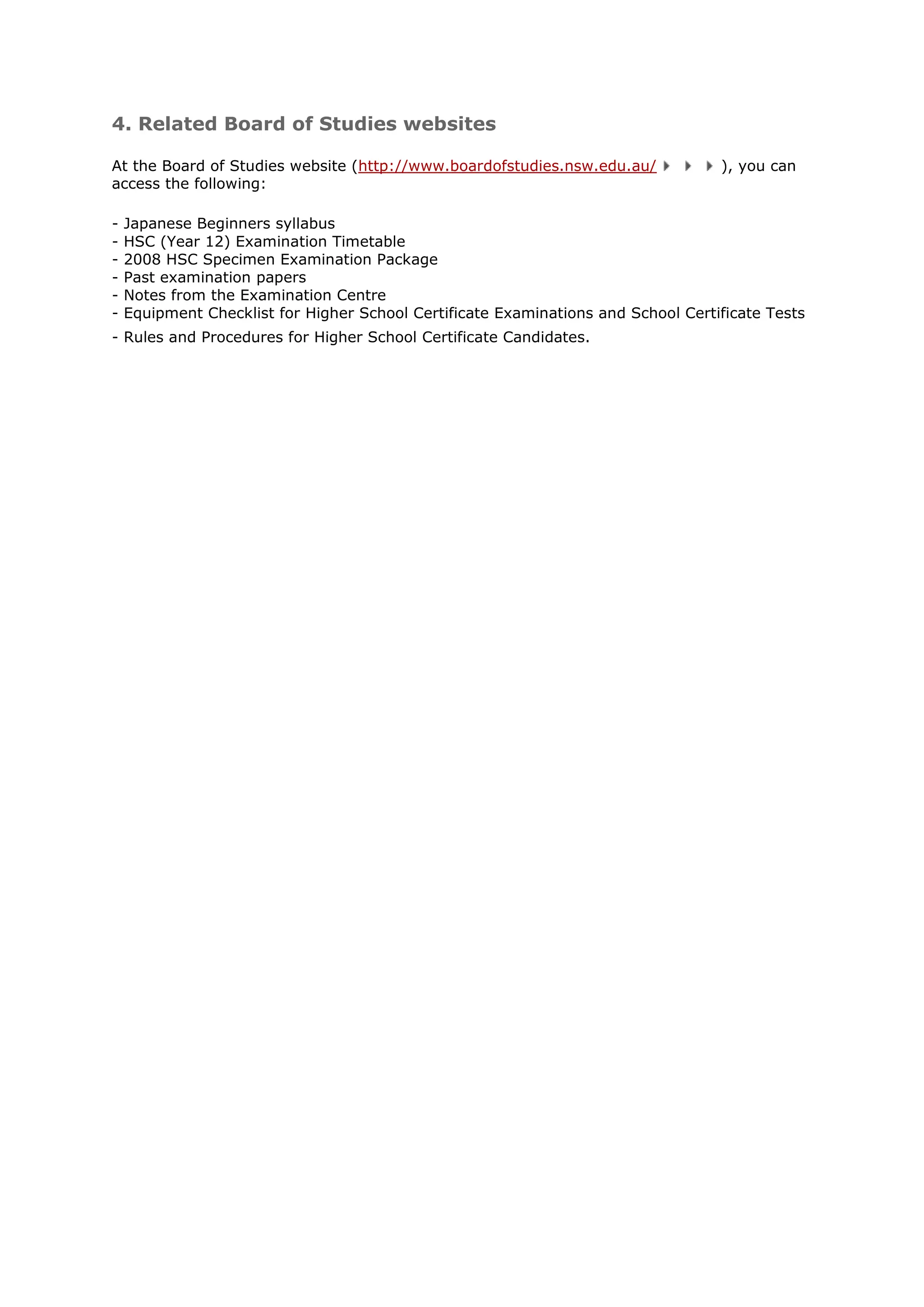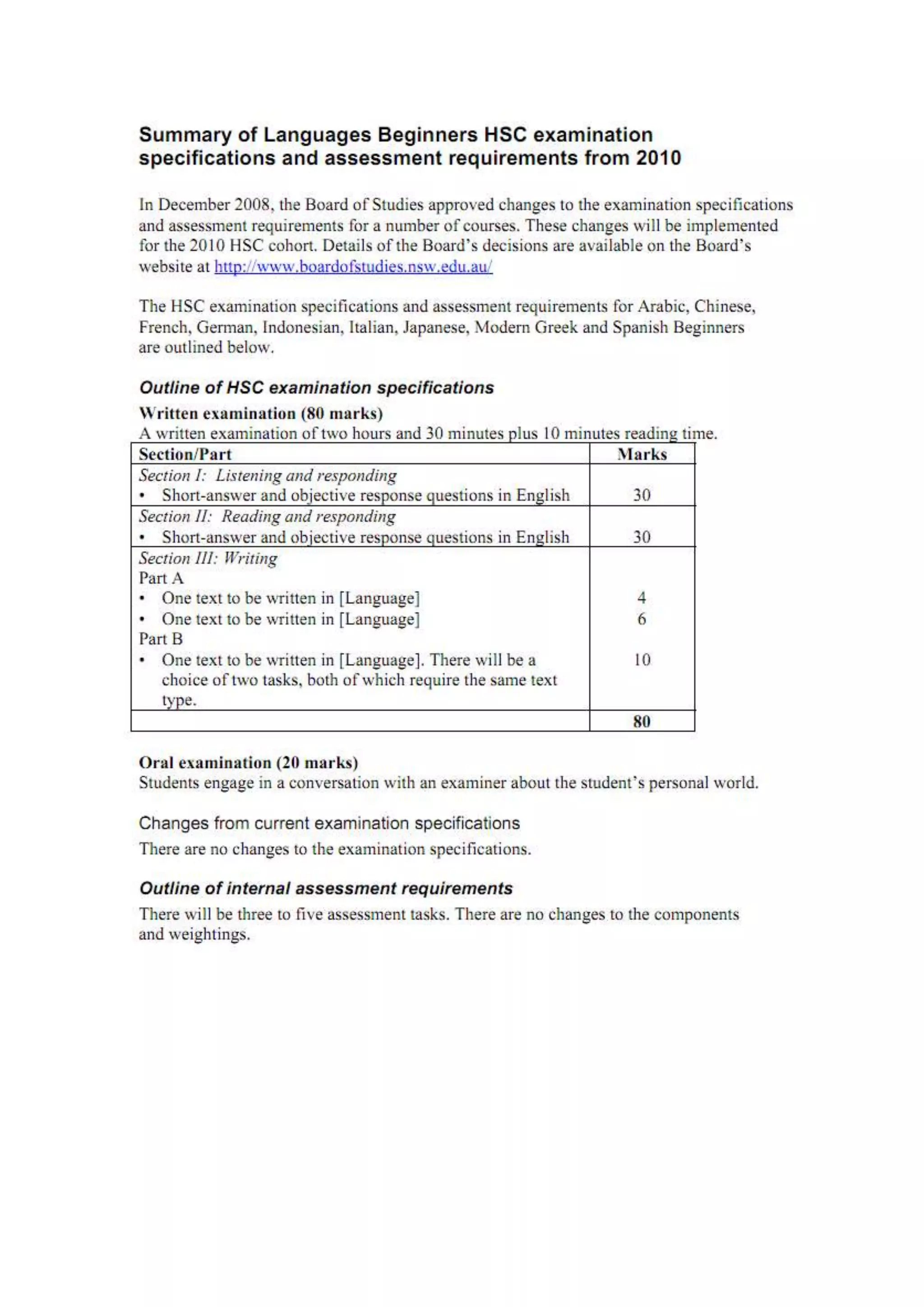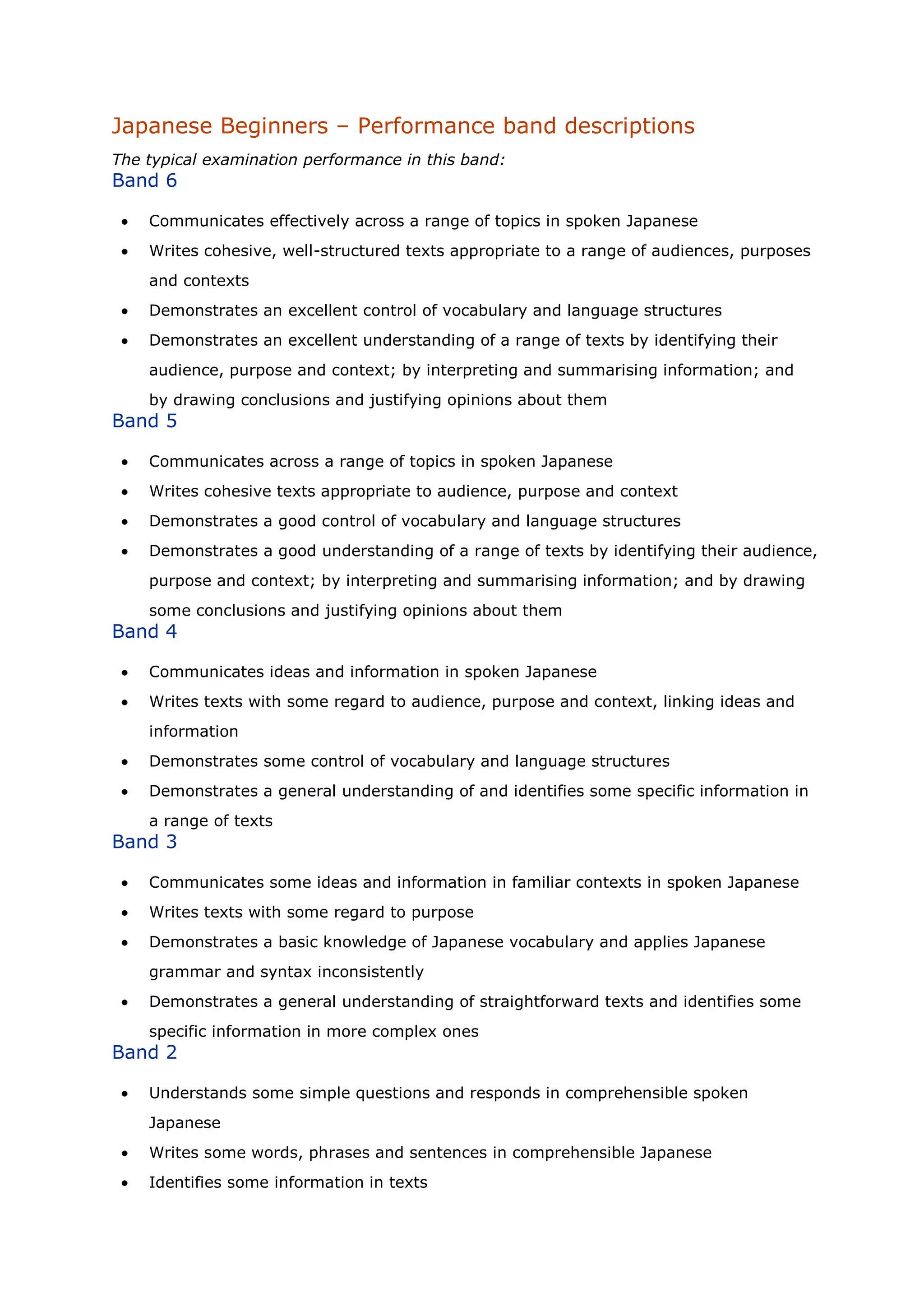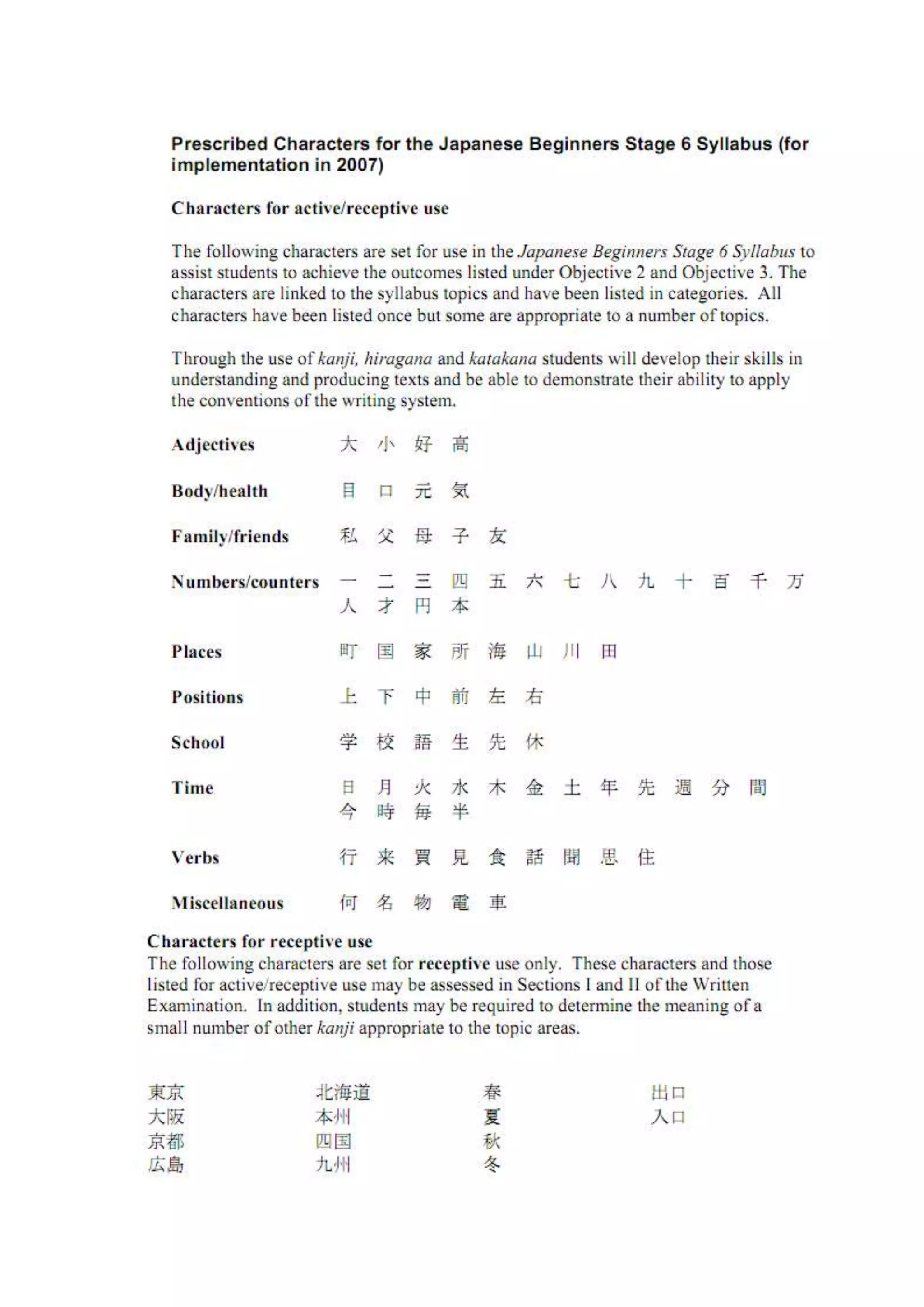The document provides guidance on preparing for and taking the oral and written examinations for the Japanese Beginners HSC course. It outlines the structure and requirements of the oral exam, which is a 5-minute conversation, and the listening section of the written exam, which involves answering questions about texts. It emphasizes the importance of practicing pronunciation, vocabulary, and sample questions to be prepared to interact naturally and demonstrate a range of knowledge during the oral exam. For the listening section, it advises students to familiarize themselves with topics, practice listening to Japanese, and develop their vocabulary in order to understand texts and answer questions effectively.
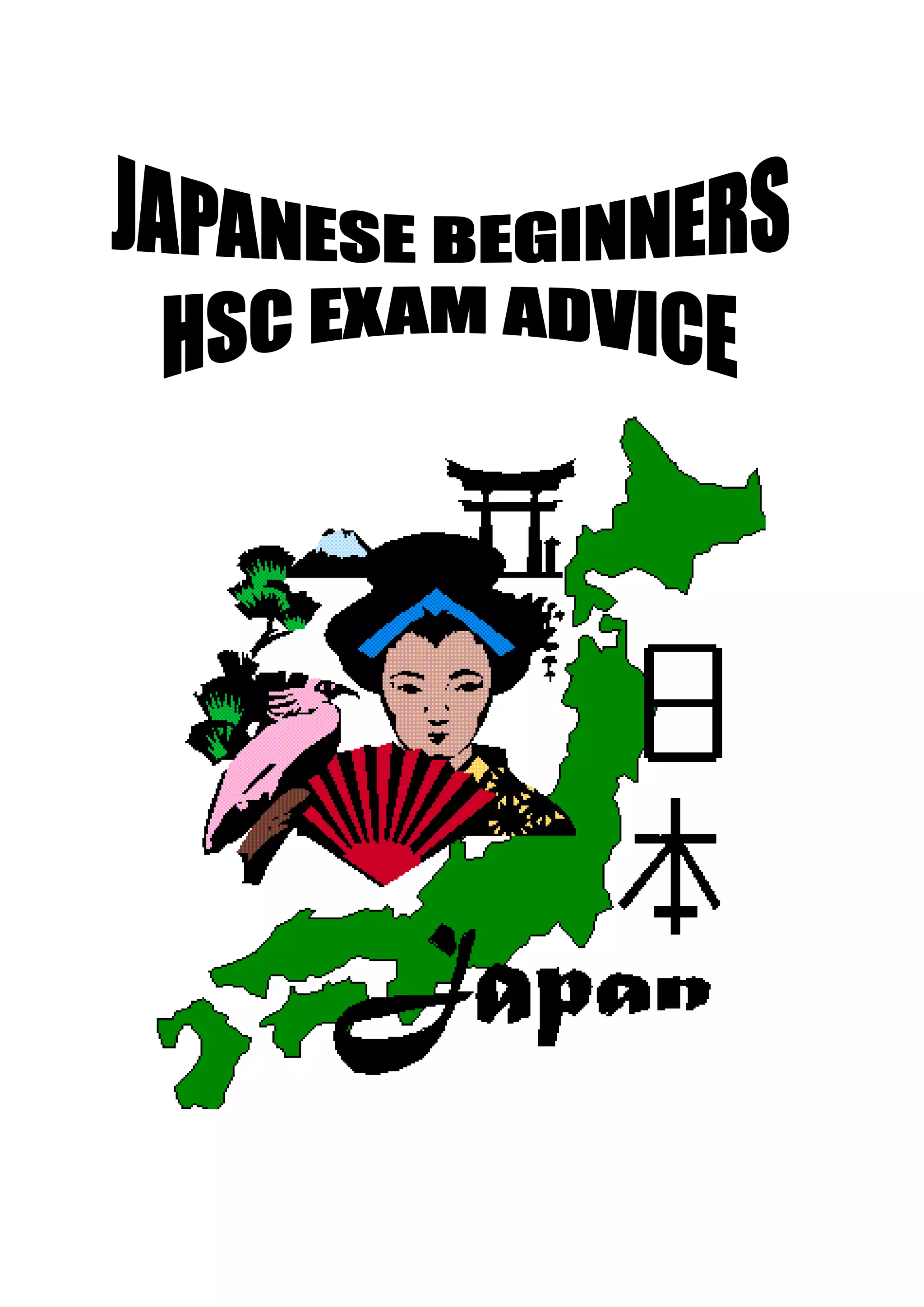
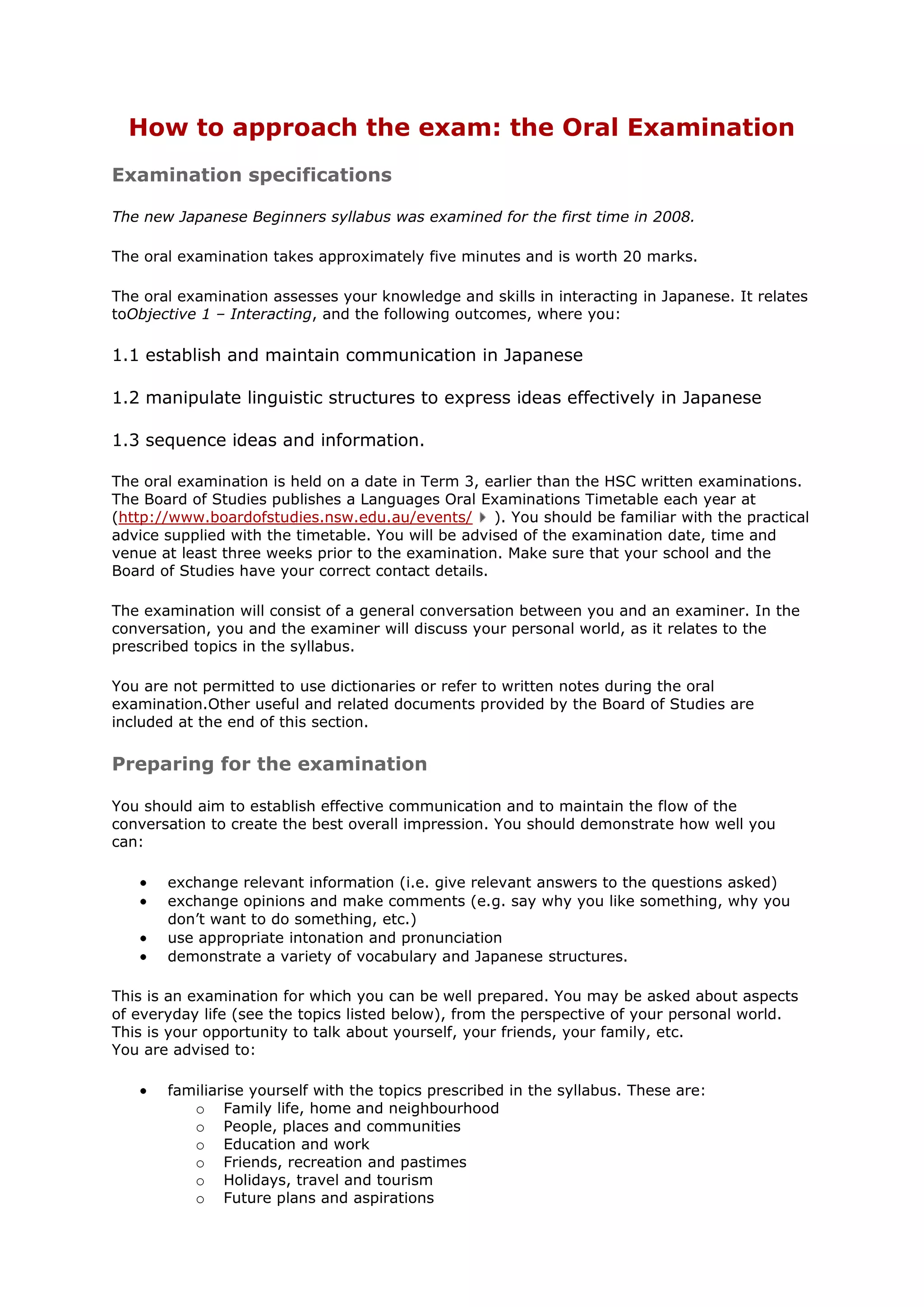
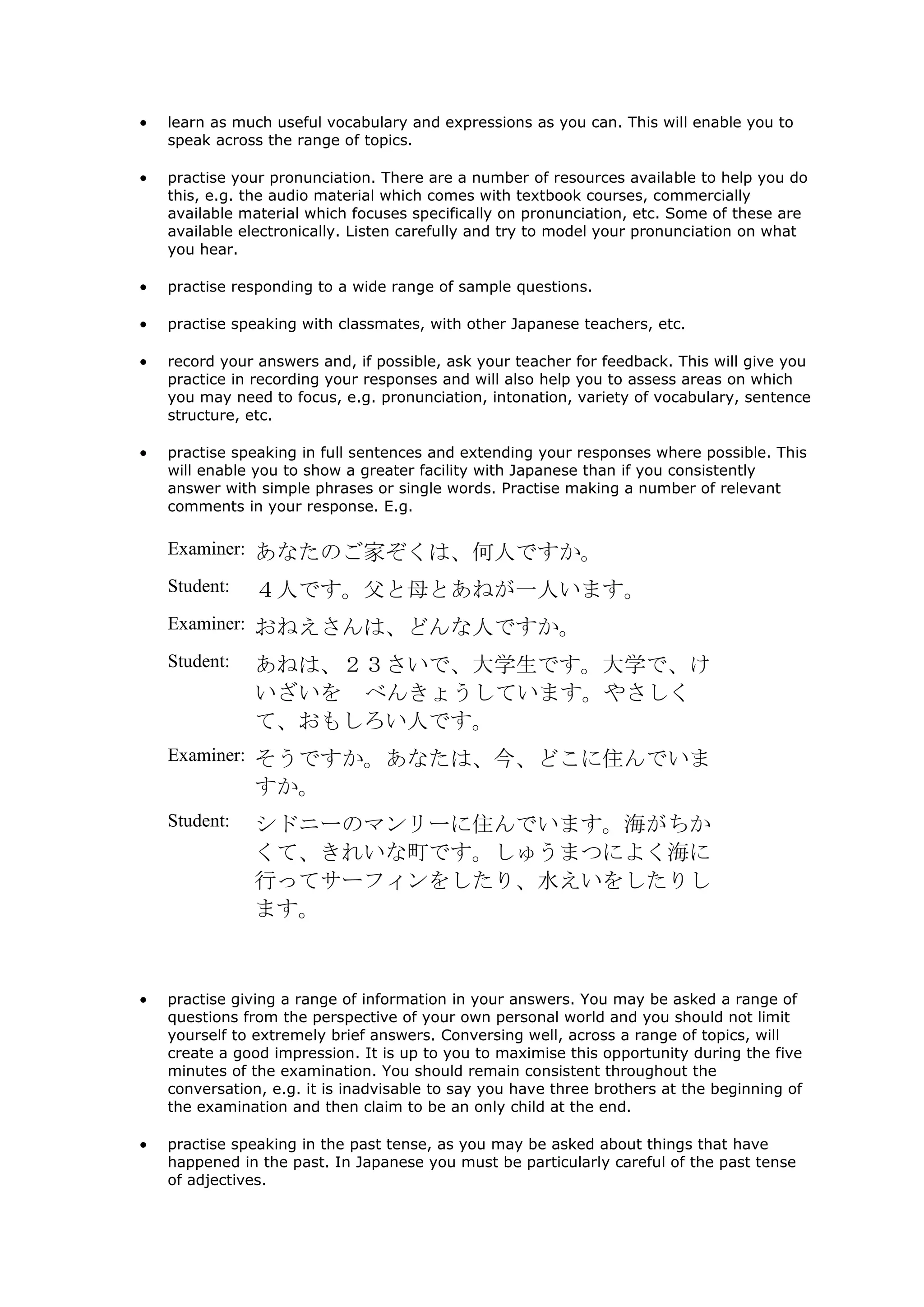
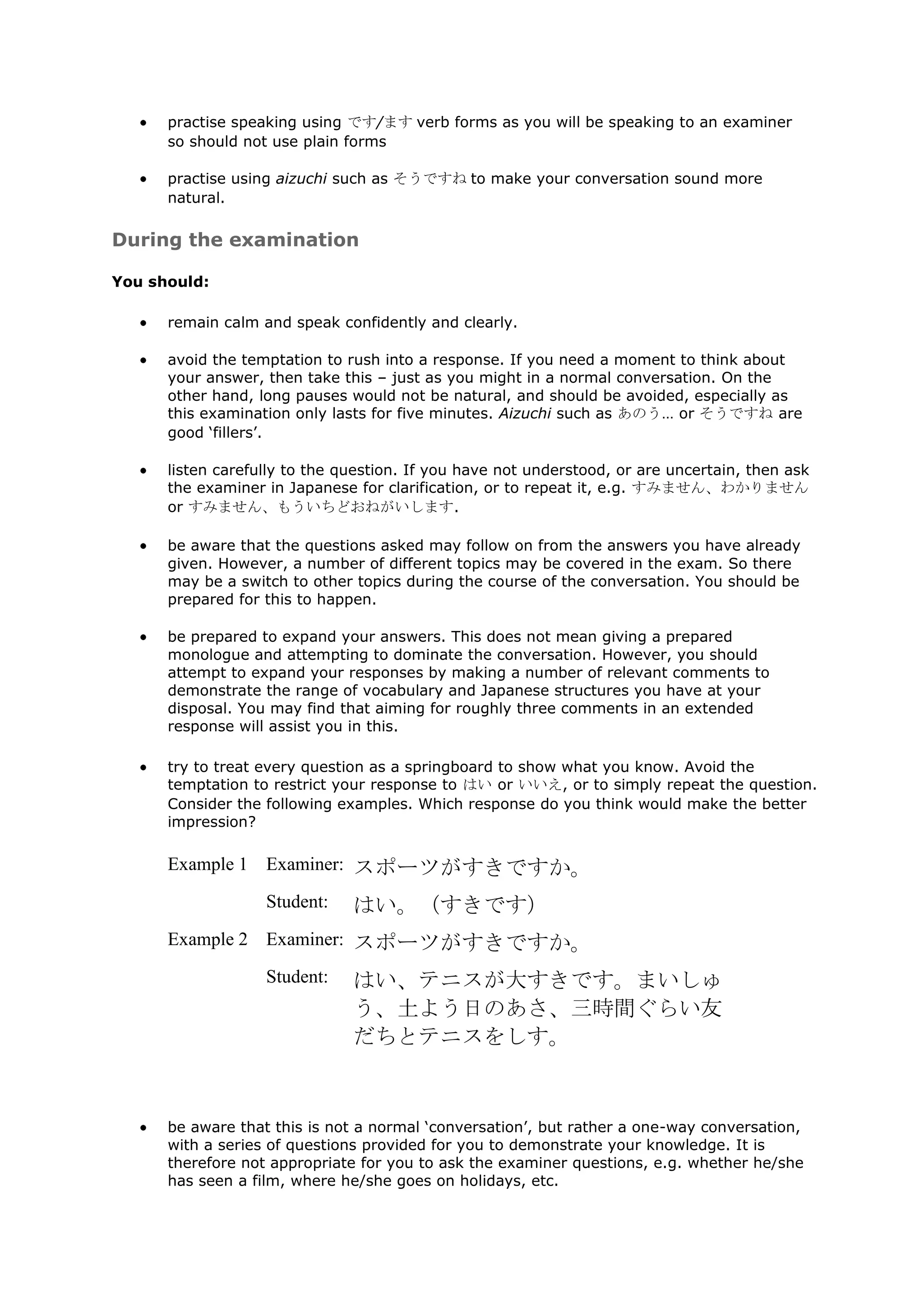
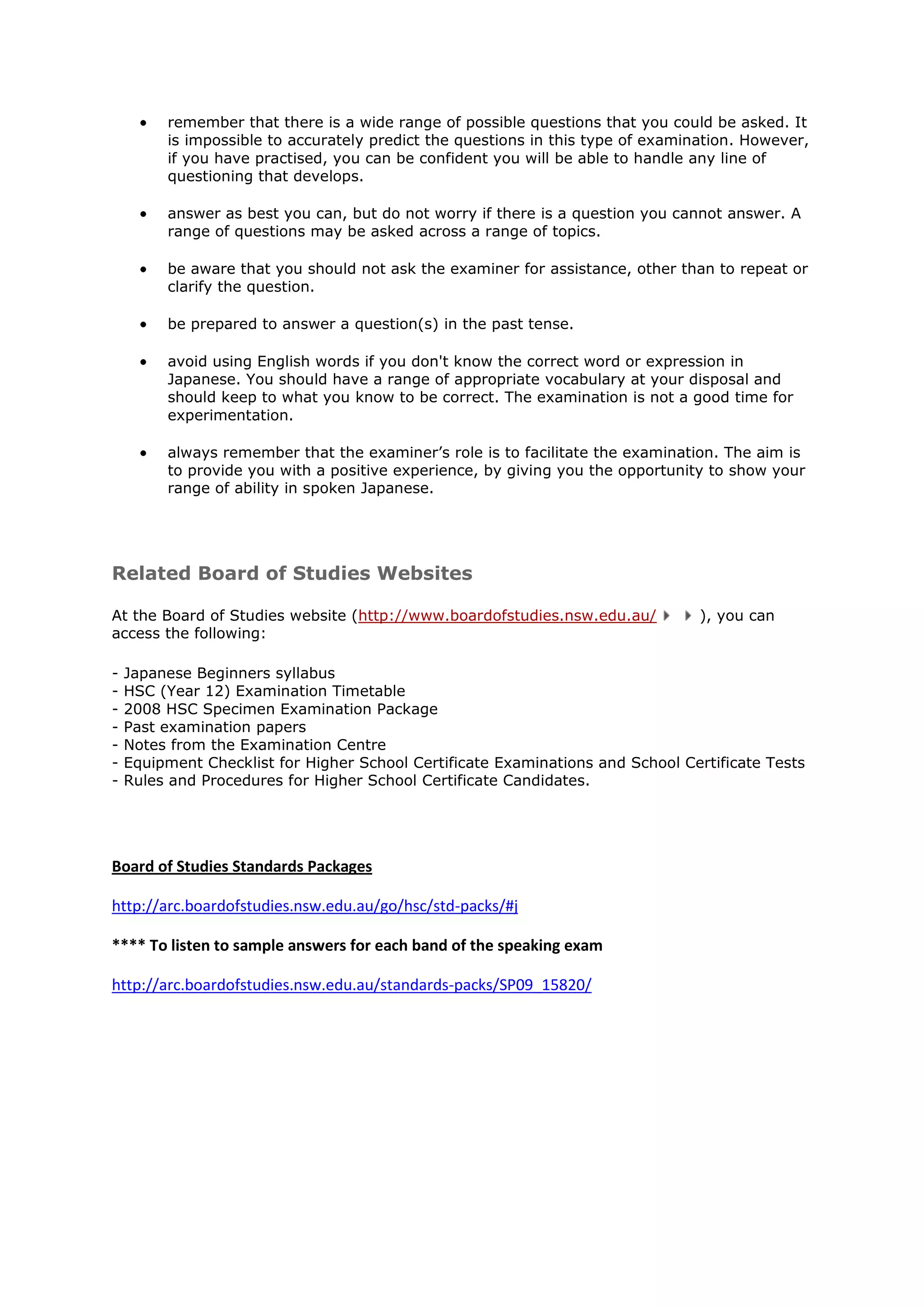
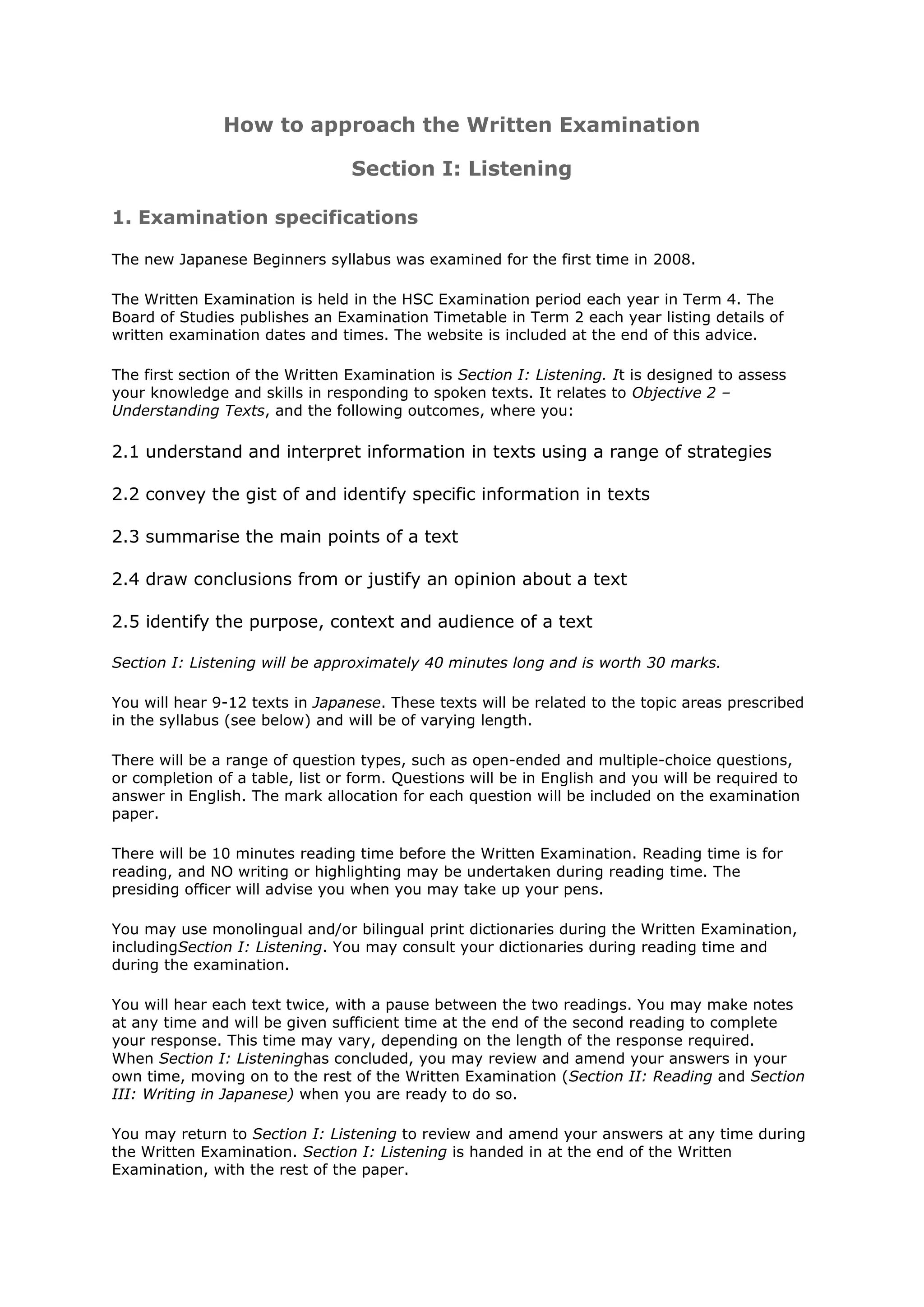
![2. Preparing for the Listening Section
The six prescribed topics are studied from two perspectives. These are:
the Personal World
the Japanese-speaking Communities.
The six prescribed topics are:
Family life, home and neighbourhood
People, places and communities
Education and work
Friends, recreation and pastimes
Holidays, travel and tourism
Future plans and aspirations.
In order to be well-prepared for Section I: Listening, you should familiarise yourself with a
wide range of vocabulary relevant to the syllabus topics. A sound vocabulary base is the key
to success, enabling you to establish a context, gain a good global understanding of each text,
infer information and identify the main points and specific information.
A good knowledge of vocabulary will also allow you to make linguistic connections.
E.g., if you know the word 物 (もの) meaning thing, it is possible to deduce the meaning of
the word 食べ物, (たべもの), food, のみ物 meaning drink and よみ物,something to read etc. If
you know that 高校 (こうこう) is senior high school, you can deduce the meaning of words
such as 高校生 (こうこうせい), senior high school student, and 高校生かつ, school life at senior
high school etc. If you know that りょうり is cuisine, you can deduce the meanings of words
such as 日本りょうり、タイりょうり、インドりょうり etc.
There is no substitute for developing a sound vocabulary base and learning to recognise as
many key words as possible. The dictionary is a very useful tool if there is a key word you do
not know. In this instance, you should jot down the key word in Japanese for checking later.
However, you should not be tempted to rely on the dictionary for too many common words.
You will not have time during the reading of the text to look up a significant number of words.
In preparing for Section I: Listening, you should listen to as much Japanese as possible and
practise answering questions which are appropriate to the Japanese Beginners course. Some
of the resources available include:
past HSC Japanese Beginners examination papers and CDs/cassettes (However, note
that there has been a change in the syllabus, and past HSC papers before 2008 are
quite different to the 2009 HSC examination format. Past papers can be accessed
athttp://www.boardofstudies.nsw.edu.au/hsc_exams/ . You should try to complete
all the past Beginners HSC exam papers since 2000 [or 2 Unit Z prior to 2000]. Your
school may be able to provide you with past papers‟ Listening Sections on cassette or
CD.)
cassettes, CDs and CD-ROMs accompanying course books
materials produced by the Centre for Learning Innovation (ask your teacher for help
in accessing these) Motto hanashitai! Moshi Moshi kiite, and Nihongo no benkyo
commercial listening packs including the Board of Studies Japanese 2 Unit Z materials,
available from the Board
selected language-learning cassettes, CDs and videos available to schools through the
NSW DET Languages Consultant, Japanese and The Japan Foundation in Sydney
Other sources of a more general nature can provide further opportunities for you to hear
spoken Japanese. These include SBS radio and television in many areas of NSW.](https://image.slidesharecdn.com/examadvicebooklet-120211213503-phpapp01/75/Exam-advice-booklet-7-2048.jpg)
